
Somewhat similar to Prestwick's evolution, Westward Ho!, or more properly, Royal North Devon GC, had its day in the sun over 85 years ago. Although, much to the consternation of Herbert Fowler, RNDís light never shone so bright as at Prestwick for it never held an Open. Yet, three Amateurs were contested over the common land known as Northam Burrows. The first, held in 1912, was fittingly won by the immortal John Ball of Hoylake...his eighth and final victory coming at over 50 years of age. Who knows, if not for WWI perhaps Mr Ball might have won another Amateur. The run of RNDís Amateurís was over all too quick for the last was hosted in 1931.
John Ball, 1913.
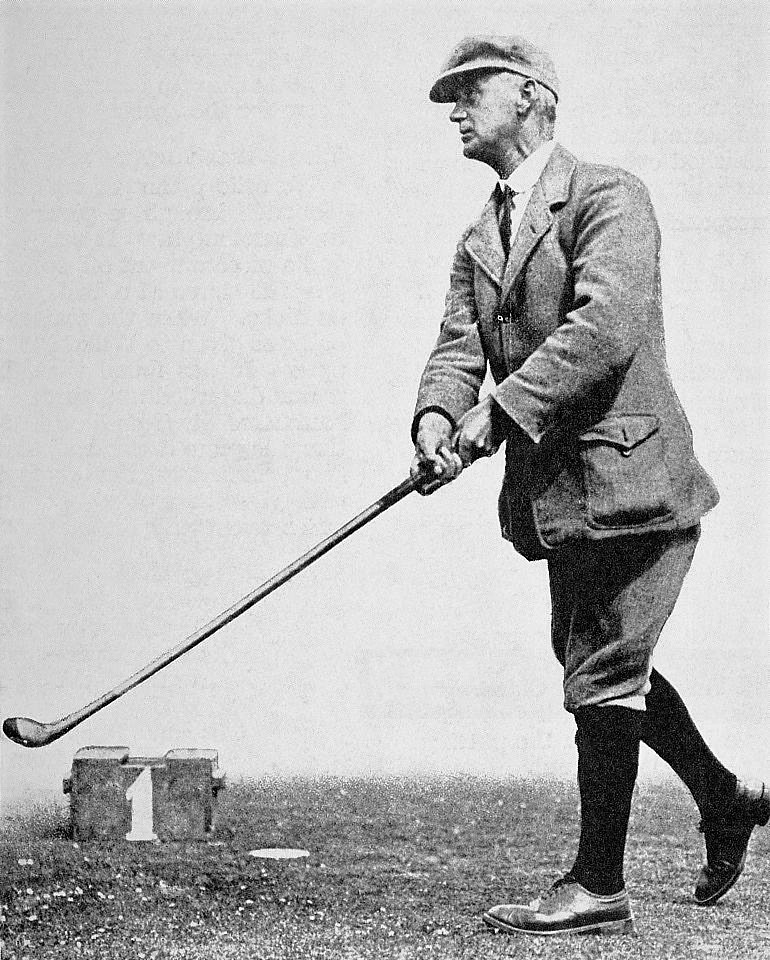
Westward Ho! is steeped in the history of English golf as it was the first golf club to be founded by Englishmen, the first links built in England and the oldest course in England still playing over the original site.
RND was one of approximately 15 English clubs founded up to 1879. The 1880s saw the English game push on with approximately 100 clubs existing by 1889. Even up to the advent of WWI, which encompassed the English golf boom, RND was a bit unusual in being an 18 hole links. By 1914 it is thought 85% of English courses were parkland and 78% started as 9 holers!
In recent years the course seems to be much maligned and this despite possessing one of the best front nines in the country. However, when the club was founded in 1864 and after Old Tom Morris worked his magic in that same year and later in 1887, the course was deemed suitable by the PGA to host an Open. Why this never happened remains unclear.
With the coming of the Haskell in 1902 Herbert Fowler was called in to toughen the examination. When reading Hutchinson's tome, British Golf Links (1897), it is clear Fowler made radical alterations to the course including the addition of signifcant length. Over the past 90 years the course has remained largely as Fowler left it. Hence the shock among the old guard when the club announced a new three hole plan in response to the alarming erosion due to battering winter storms. The club has approved a design by T Mackenzie which includes new holes for 7, 8 and 9. The new 7th follows the current corridor, but instead of legging left over the rushes, the hole carries on to a green forward and right of the old 8th tees. The 8th plays over the high ground above the old 8th green...away from Bideford Bay. The new 9th plays over low, often flooded area and reconnects with the old 9th fairway as a dogleg left using the same green.
Westward Ho! has the distinction of not only having two of the finest names in architecture associated with the club, but also for producing two sons which were supreme golfers; Horace Hutchinson and JH Taylor. Hutchinson first came to prominence when at the sweet age of 16 he won the Silver Medal and thus became the Club Captain. There being no rules about such matters, HH dutifully took the Chair and presided over the General Meeting. The rule was changed the following year to preclude such youthful influence in the future.
Perhaps unfairly known today mainly as a student, teacher, author and all round servant of the game, Mr Hutchinson was a fine golfer who won back to back Amateurs in 1886-87. The defence of his title required a win in the final over the great John Ball...at Ballís home course...Hoylake.
Horace Hutchinson, Vanity Fair, 19.07.1890.
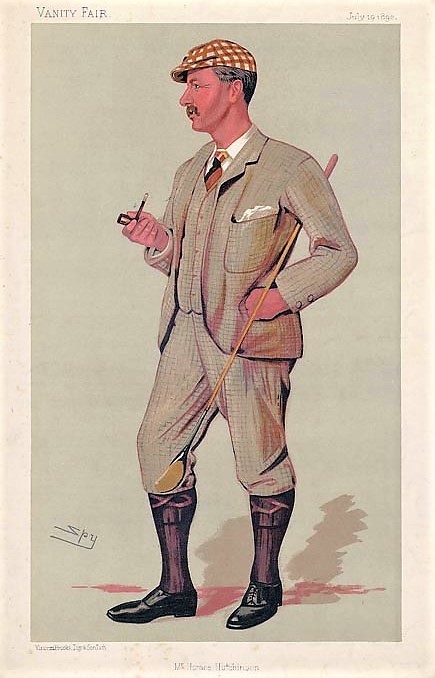
Golf can make strange bed fellows and in the case of one house boy working with the Hutchinson family it certainly did. Coming home from Oxford during the summers etc Hutchinson would employ this house boy, one JH Taylor, as a caddie. JH would eventually graduate to the green keeping staff as he learned the game and learn he did. It was very fortunate for the game of golf that the military refused to enlist JH due to poor eye sight; quite ironic for a man with the reputation of straight hitting. After beating Andrew Kirkaldy in the Challenge Match Play it was clear that JH was destined to win on the big stage. Four years later, in 1894, JH won the first of five Opens. Like the other members (H Vardon & J Braid) of the Great Triumvirate, Taylor was a golf all-rounder who was skilled at many aspects of the game. When the British professionals organized they looked to Taylor to help found and chair the British PGA in 1901. It was also JH who captained the 1933 Ryder Cup team to victory, the only Captain from either side which never played in the matches. Golf is truly a blessed game when a man of such humble origins can rise to the greatest heights.
JH Tayor, 1912.
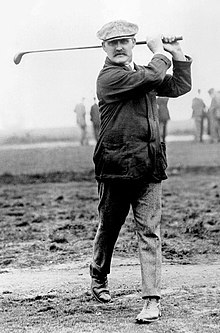
A portrait of JH Taylor hanging in the house.

The map of the course as it was after the house was moved to its present location. Place names such as Goosey Pool (was there swimming in this water?) and Inland Sea no longer seem to exist. Although, there is a bit of a marsh near where Goosey Pool was located.
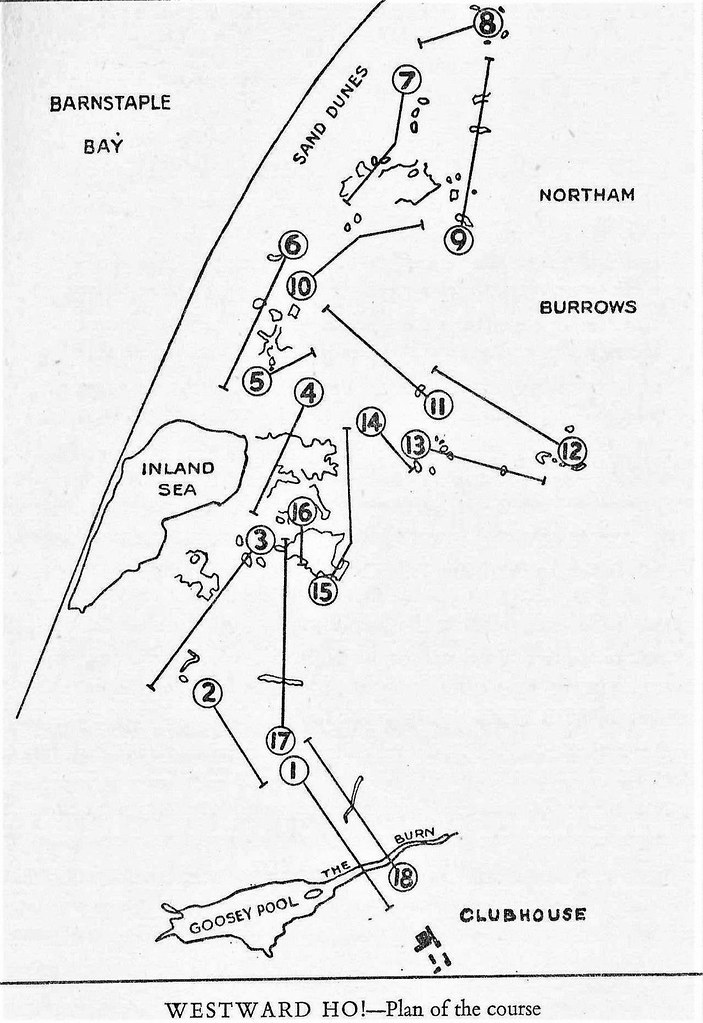
Players Cigarette map.

The Old Tom Morris design placed the rather functional clubhouse near the Pebble Ridge which necessitated a rather long walk to the burrows. In 1888 it was decided to build the current house above the links. As is often the case, changes beget changes. To play from the new house, it was necessary to bookend the links with four new holes: 1, 2, 17 & 18. These are difficult, but comparatively dull holes. It is unclear who designed these holes over flat, heavy turf, but one gets the impression the goal was to enter and exit the proper holes quickly and with a minimal amount of fuss. Moving to the third, the course turns right and plays along the Pebble Ridge. While the opening two holes are fairly wide, they are framed by ditches and what seem like mini-rushes.
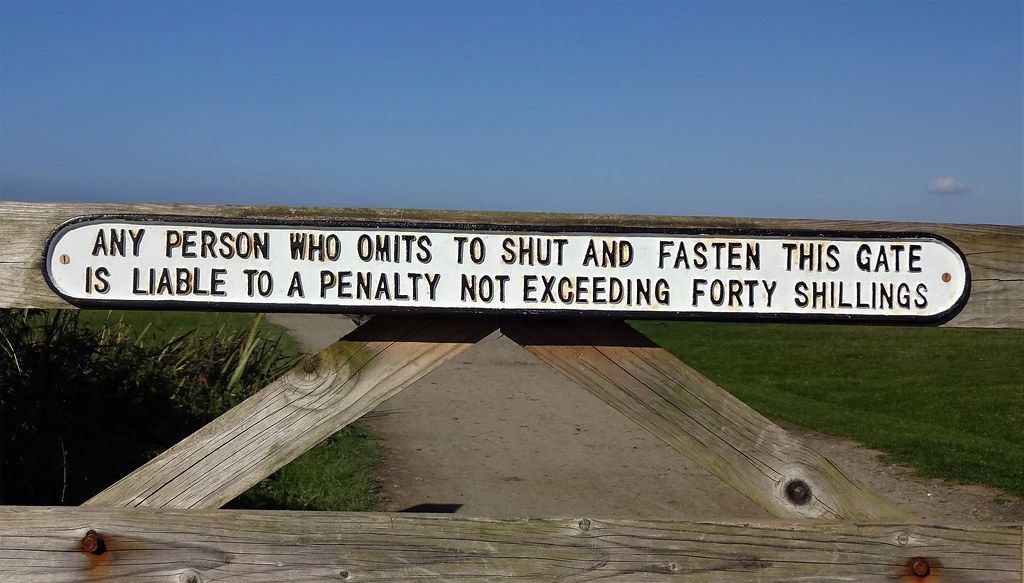
The opener looking back at the house.

#1 is a reachable three-shotter.
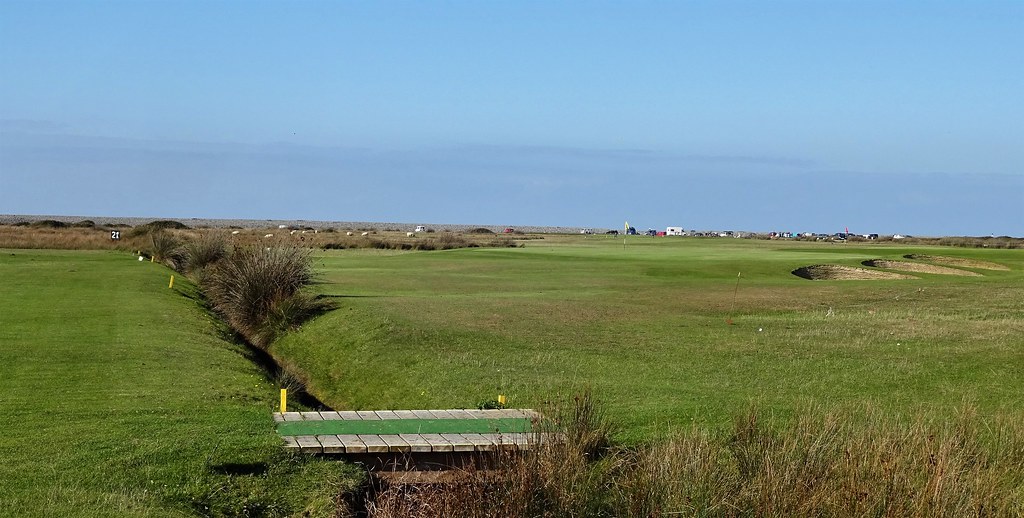
Standing on the third tee, it is the lack of definition which is disquieting for some. Perhaps it is this freedom which has placed Westward Ho! at odds with the modern golfer.
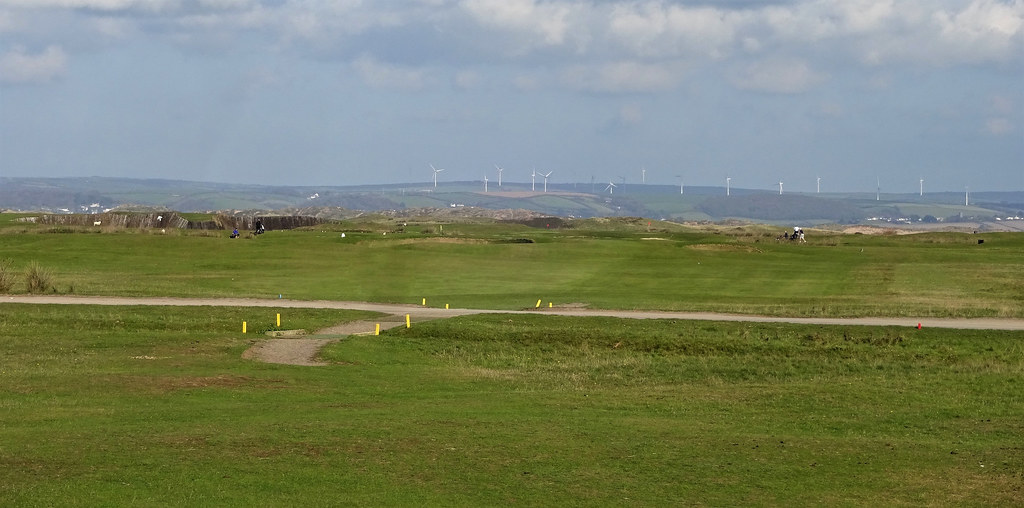
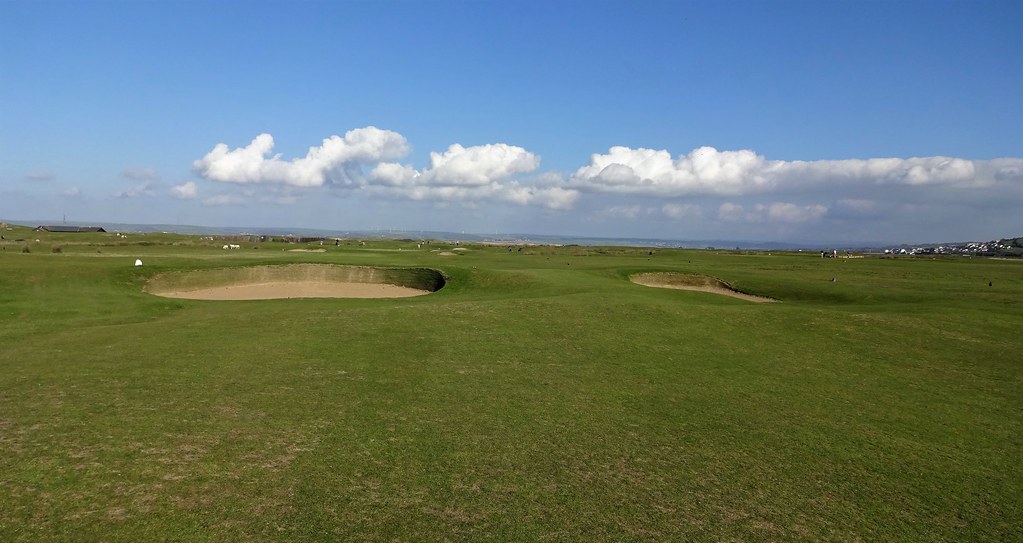
More to follow.
Ciao